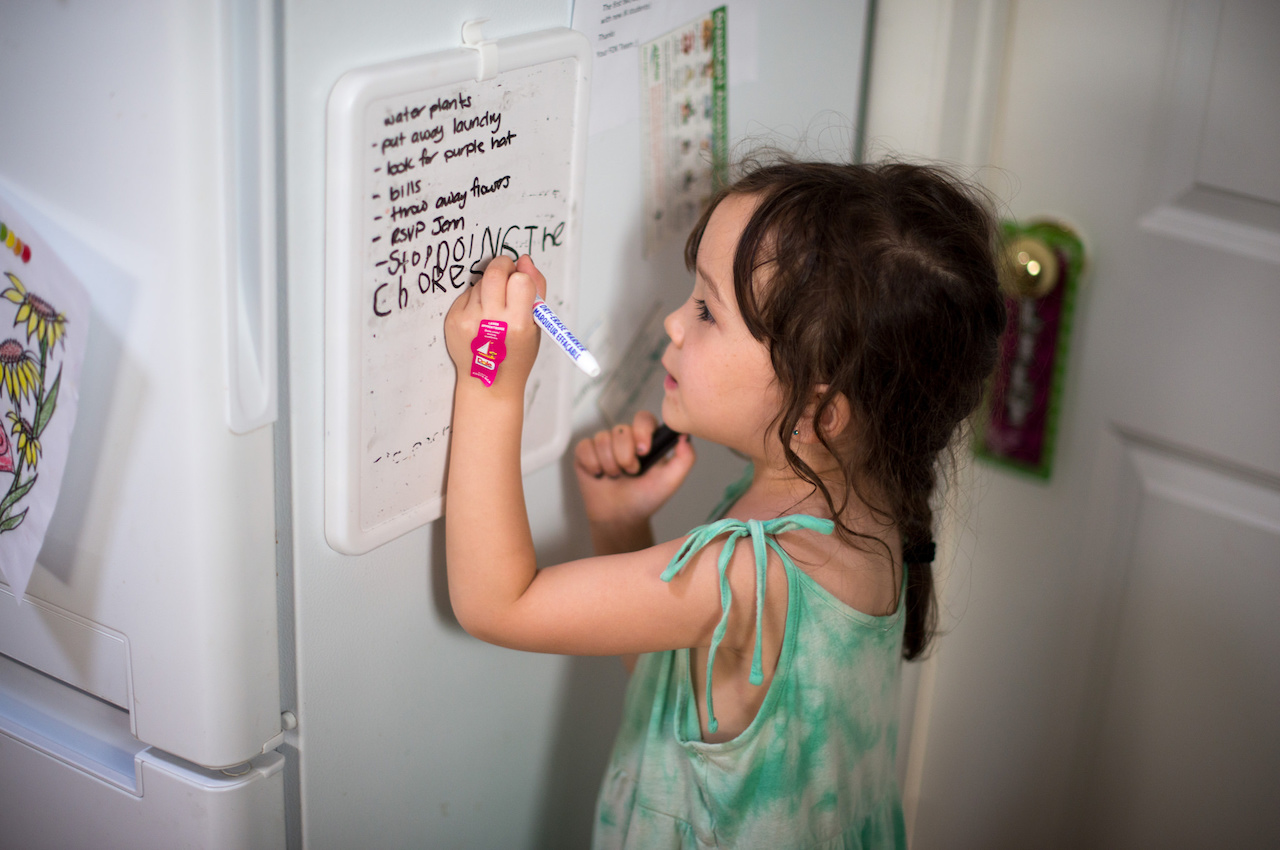We all know that feeling of disorganisation and stress from a busy week! Keeping balance in your home, work, family, and social life is no easy feat. There’s no quick-fit to organisation, but you can take back control of your weekly routine by creating a simple plan or routine. A weekly routine takes away a lot of everyday decision making and stress, leaving you with more time for the things you enjoy in life!
A great place to start is to write everything down. Get out all your thoughts and concerns from your subconscious and put them on paper! Physically writing things down relieves your brain from carrying around demanding thoughts and lets you logically see ways to find better solutions. Once you’ve done this, you’re ready to create some plans!
There are lots of different ways you can go about planning your week. Start with the basics and see where you can build a routine. I like to plan my week on Sunday night so I feel prepared for the week ahead. I use a family shared calendar to schedule our weekly activities so that both my husband and I are on the same page. I also use a diary to map out my week because I love to use paper and pen and get the benefits of physically writing things down. Here’s some of my best tips for setting a weekly routine.
Step 1 – Add weekly routines to your calendar
Think of all the daily activities you and your family do- like school mornings, work, bath time, bedtime, and mealtimes. Start with these activities, then consider other important routines like washing, cleaning, meal preparation, and even calendar organisation. By creating a time and space for these activities, they’re less likely to cause additional stress or be forgotten.
Setting this routine is not only going to reduce your stress and effort, it helps other family members know who needs to do what, when, and how often. An organised and predictable home environment helps children and teenagers feel safe, secure and looked after. Routines can be extremely useful for children with Autism, ADD, ADHD and other developmental delays. These children thrive with structure and predictability. Try to think of daily, weekly and even monthly routines that might help your family life and add them to your plan.
Step 2 – Make a list of all the single tasks for your week
I love a good to-do list! Lists clearly show what needs to be done, and you get the satisfaction of checking off items and feeling accomplished at the end of the week. I use David Allen’s concept of creating lists with context. These are like tags about where you will do the task. The ones I’ve been using that I find most useful are phone (messages and calls), laptop (emails, purchasing), errands (in-car), home (around the house).
The important thing is to be able to look at your list and work out when and where in your week you can do that task. It will help you stay focused and save time. You can’t forget something important if it’s written down!
Step 3 – Add only 3 tasks to each day
Let’s not get too crazy. Take it easy on yourself and keep your days manageable. Limiting daily tasks stops you from feeling overwhelmed, and helps you to feel a sense of achievement. Make sure you consider the time and energy you have on each day before you add a task. Self-care is always more important than finishing tasks on time.
Consider delegating some tasks to reduce the burden on yourself. Other members of your family have an important part in making sure routines run smoothly too. If you are feeling overrun with tasks, ask yourself is something urgent or important? If not, it’s OK to move it to a later date.
Step 4 – Declutter Projects
Maintaining a good routine is difficult to do when your home is a mess. A clutter-free home runs smoothly because every member knows where to find the things they need each day. It also reduces stress and anxiety, creating a calmer atmosphere for everyone.
Decluttering doesn’t have to be done in one huge day. Small decluttering behaviours are a more efficient way to maintain your home. Instead of cleaning your living room everyday, consider setting up organisation systems that keep it tidy for a long time. Think storage boxes, labels, or a rotating roster of chores. Get creative and look up organisation ideas on pinterest or Instagram. I love ‘keep, donate, throw away’ boxes that make sorting out old items so much easier!
Step 5 – Planner for the family
Organisation isn’t just for you, it’s something the whole family should be a part of. This allows everyone to contribute and reduces the individual burden of weekly tasks. Include your family in your weekly routines and let them know why it’s important to contribute. I use a ‘command centre’ with my family that has all the tasks we need to do each week. I have this in the kitchen so it’s central and everyone knows what’s happening when. Find a way that works for your family and make your weekly routine for everyone!








